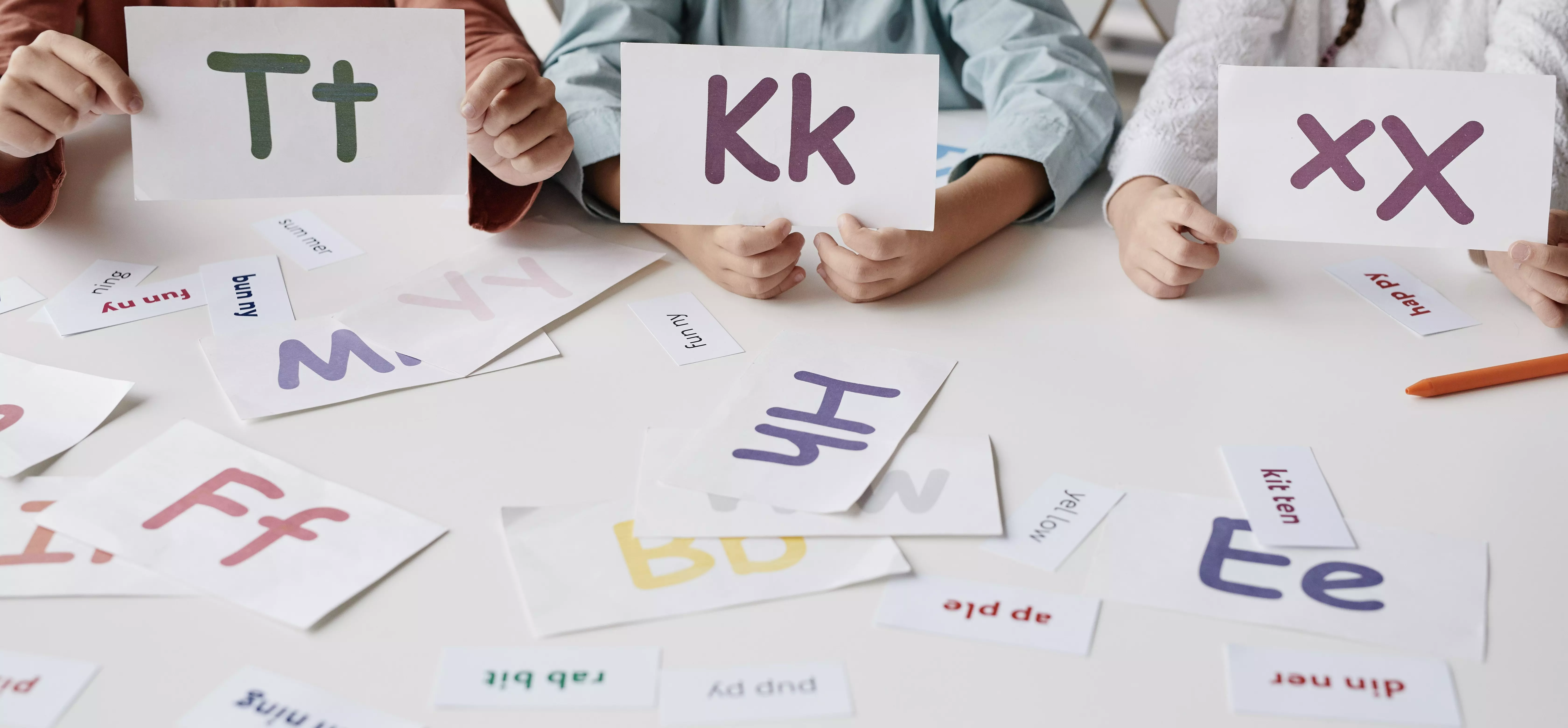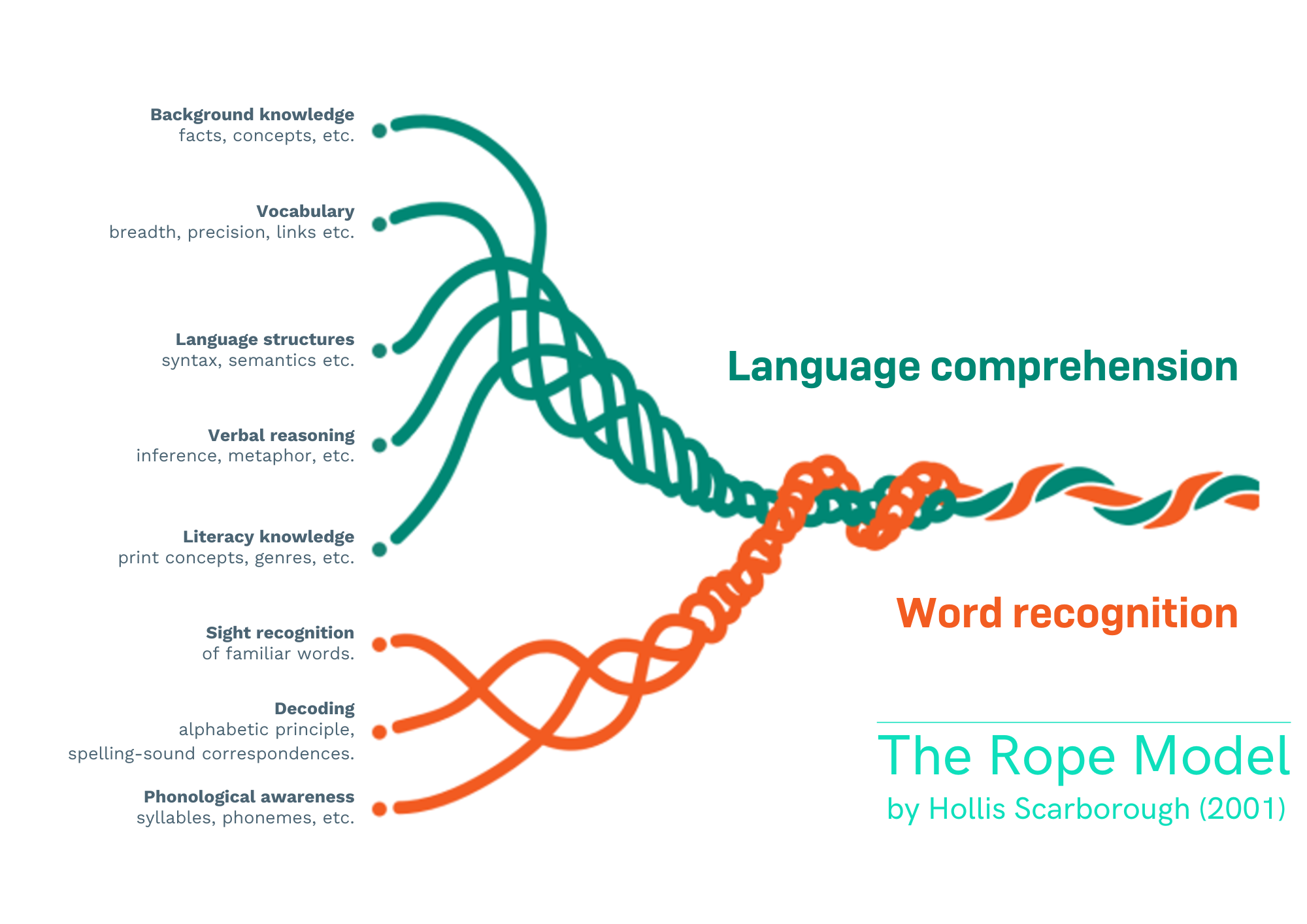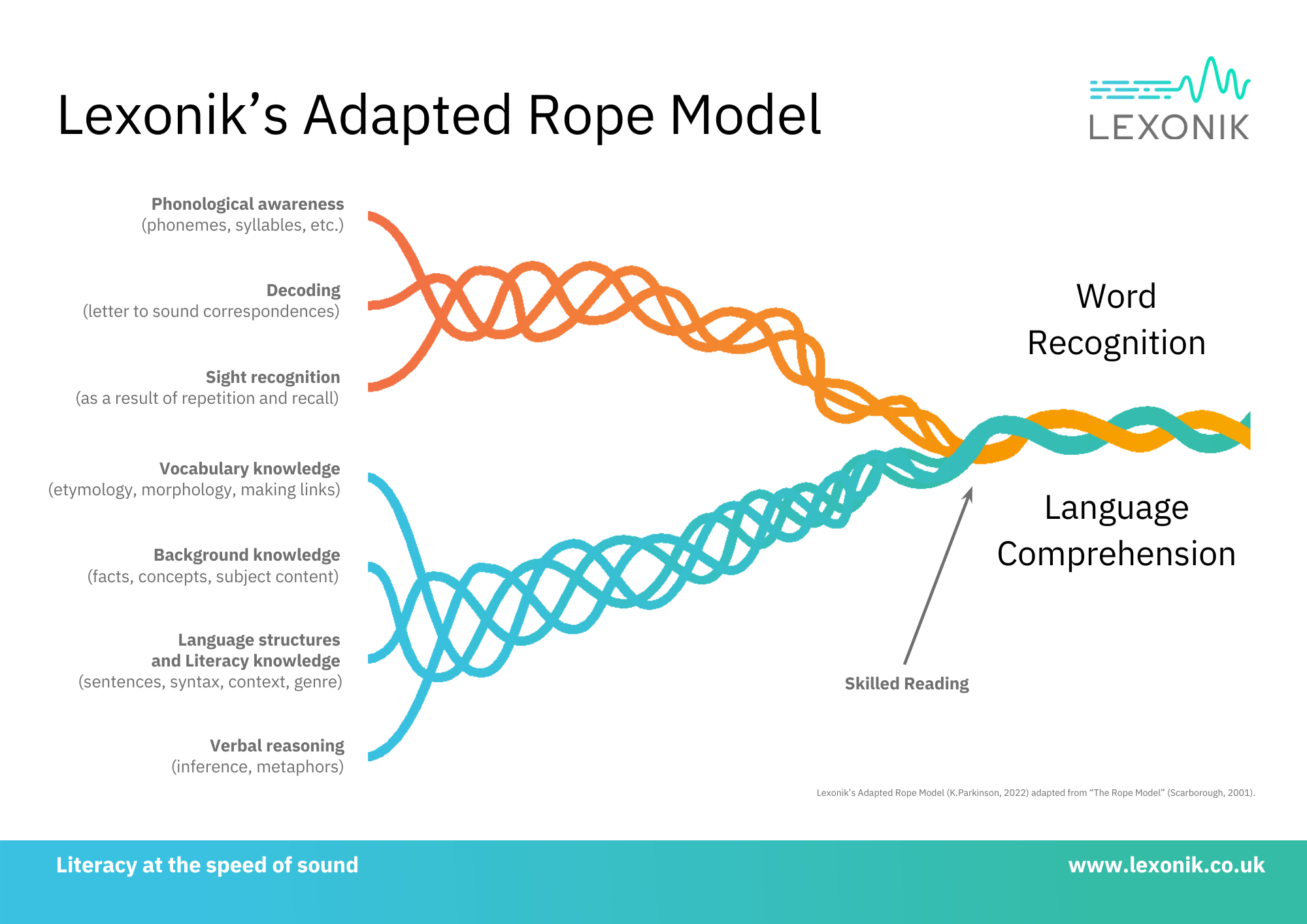Blog
·Teaching Phonics in Secondary

A lack of phonics understanding is becoming a more and more prevalent issue at the middle school level. Due to the pandemic, many learners are moving up to the middle grades without developing essential phonics skills. In addition, many EAL learners have never received a complete English-language phonics education.
So phonics is something that middle grade educators need to be comfortable teaching, and we’re here to help with this guide on why and how we should be teaching phonics in secondary.
What Is Phonics Instruction?
Before we go any further, let’s look at exactly what we mean by the term “phonics instruction.”
Phonics is a method of learning to read and write. Phonics works by breaking each word up into its individual sounds, before blending those sounds back together to make the word. The ability to “decode” words by breaking them down into sounds is what keeps us from having to memorize thousands of words.
Synthetic phonics is the most widely used approach. Using this method, phonemes (sounds) associated with graphemes (letters) are pronounced in isolation and then blended together (synthesized) to form the word.
Think of the English language as a code — phonics is a way to teach that code. It teaches us how to match up the spoken sounds to the written letter or groups of letters.
There are 26 letters in the English language, but there are 44 phonemes, and these 44 phonemes can be represented by different graphemes (letters). For example, the “ah” sound in English can be spelled as:
- a
- ay
- e
- ei
- ai
- ea
Language is incredibly complex when we look at it through this lens, so it’s important to use the most effective, proven strategies to teach phonics. Although there are a few different types of phonics instruction, we’re going to concentrate on the most widely used — synthetic phonics.
Why Teach Phonics in Middle School?
Not all of us are English teachers, nor do we want to be! However, we must recognize that language is at the heart of every curriculum. If students can’t access the new words that they’re seeing in every subject, they can’t access the content.
We gain the vast majority of our knowledge through what we read, so it is imperative that students are confident readers. Conversely, students’ ability to access knowledge is greatly reduced by weak reading skills.

The amount of knowledge that students need to consume to be well-equipped by the end of middle school is vast. It is not possible to cover it all in lessons alone, nor is this desirable — if we consider the Cognitive Load theory. Developing independence in learning has to be one of the major goals of education, and it's obvious that fluent readers have a much greater chance of success.
It’s also important to note that, when we think of phonics, we tend to consider its place within tier one vocabulary — the social language that students acquire in early childhood and elementary school.
At the middle school level, the focus shifts to tier two and three vocabularies — academic language — but phonics is what supports all tiers of vocabulary. So to further enhance and support the development and confident use of tier two and tier three vocabulary, we need to couple phonics instruction with morphemic analysis.
Phonics isn't just d/o/g. Middle school phonics instruction needs to be age and level appropriate, which is what we're going to explore together.
So, let's put ourselves in the shoes of a struggling reader. Let's imagine the bold words in the passage below are words we can't read.
“As Harry squelched along the deserted corridor, he came across somebody who looked just as preoccupied as he was. Nearly Headless Nick, the ghost of Gryffindor Tower, was staring morosely out of a window, muttering under his breath,". . . don't fulfil their requirements . . . half an inch, if that . . ."
— Extract from Harry Potter and the Chamber of Secrets
We are able to read 82% of this passage. However, studies show that learners must be able to read at least 95-98% of all the words in an academic text to comprehend the meaning.
So, if we are able to read 82% of this text, what can we comprehend?
- We know Harry is in a corridor
- He encounters Nick, the ghost, staring out of a window
- He's muttering something
Now, let's try that again, this time with an extract from an AQA GCSE Biology textbook.
“The abundance and distribution of organisms in an ecosystem is determined by biotic and abiotic factors. Animals and plants have adaptations to allow them to compete for resources.”
What can we comprehend when we’re only able to read 82% of the text?
- Something about organisms in an ecosystem is determined by some kind of factors.
- There's competition for resources.
Does this level of understanding contribute in any meaningful way to our knowledge of the topic?
Fiction, in its nature, has more flowery words, so we can fill in the gaps and make sense of the text more easily. But as they transition into middle school, students must interact with a greater percentage of informational text. Not only that, but they’re also exposed to 3-4x as much language, just in terms of quantity.
High correlations between standardized test scores and reading ages is unsurprising in the arts, but the same relationship is found in math and sciences as well, highlighting the importance of literacy for all subjects.
Where Does Phonics Come into Play when Learning to Read?
When learning about phonics and how to teach it within the middle school classroom, it’s important to know how phonics applies to reading. For this, we can refer to the five pillars of reading:
1. Phonemic Awareness
Identifying and manipulating units of oral sound and language.
2. Phonics Instruction
Blending sounds in speech, using sounds instead of letter names, linking sounds in speech to letters to form the beginnings of writing (orthographic mapping / grapheme correspondence).
3. Fluency Instruction
Speed, accuracy, expression.
4. Vocabulary Instruction
Morphemic analysis, examination of component parts of words.
5. Comprehension Instruction
Independent, strategic, metacognitive readers.
We can sometimes be guilty of referring to reading as a basic skill, which suggests it's easy. But in fact, Scarborough’s rope model, displayed here, illustrates how reading fluency requires a set of complex subskills.

The orange strands need to be in place before a reader can access the green strands, which are the higher order subskills. These orange strands allow readers to reach automaticity, which is crucial for reading comprehension and fluency.
You can see the similarities between the rope model and the five pillars. Scarborough uses the idea of a rope because, like a rope, if any one strand is compromised, it will weaken the rope. It takes all subskills woven together to form a well-rounded, skilled reader.
At Lexonik, we've put our slant on the rope model and reordered the strands to appear in order of the development stages. But let's be clear, all threads are important! We're simply suggesting a logical order of how these skills are layered.

Why Do Middle Schoolers Struggle with Phonics?
According to the U.S. National Center for Education Statistics (NCES), 34% of fourth graders are below the basic reading level, and another 31% are below the proficient level. At this stage, we must ask ourselves why older learners are still struggling with phonics and reading.
There are a vast number of reasons why older learners may have difficulty reading, but some of the primary causes are:
- Continued failure — This results in avoidance strategies, which compound the problem.
- Physical issues — Speech and language are intrinsically linked, so anything that inhibits the ability to clearly hear and then replicate pure sounds within spoken language will have a detrimental effect on a student’s phonological awareness.
- Processing speed — This is the fluency part of reading development. A student knows the sounds, but their recall isn’t quick enough. In order to develop reading skills, they need to develop automaticity and speed of recall.
- ADHD — ADHD learners can find reading difficult due to their issues with focusing, managing distractions, and processing and retaining information. These learners will benefit from short bursts of highly focused, intensive teaching.
- External influences — Some students struggle with family issues or a lack of support at home. While these things are outside of our control, we must be sympathetic to the individual needs of each student and provide appropriate support. In some cases, this may be emotional and/or behavioral support.
The English Language Is Tough!
Phonics is the foundation of reading, but because of the complexities of the English language, it can only take us so far. When we rely on phonics alone to read a new, unfamiliar word, we can make mistakes with our pronunciation.

Sometimes we mispronounce words because of a combination of our phonics knowledge and our existing lexicon (our stored bank of words).
Here's a real-life example:
When LinkedIn was newly launched, an able adult reader asked what “link-ed-in” was all about. She had no knowledge of the word; she'd never heard it before. She was forced to use only her phonics knowledge and existing lexicon.
Able decoders use phonics but are also able to self-correct errors if they have some prior exposure to the spoken word.
Take “comic” as an example. If I had to decode the word, I would decode it as: com-ic.
Encountering the same letter structure in the word “humid,” unless I'd heard the word before, I would apply the same phonic formula and decode it as: hum-id.
But the key is that I would self-correct if I'd heard the word before, which is why exposure and vocabulary role models are so important for the emergent reader.
So once your students have learned to apply their phonics skills, you may need to guide them in their self-correction as they broaden their vocabulary. However, most issues will be a result of how they're segmenting the word.
How to Tell when An Older Learner Is Struggling with Phonics
A student’s reading difficulties are not always immediately apparent. Often, the signs are more obvious when you look at their spelling skills, which go hand-in-hand with reading. However, students are adept at masking vulnerability, and therefore, sometimes it's behavior patterns that are noticed first. So here are some signs that an older learner is struggling with phonics:
- Can't orally distinguish sounds within words. EAL learners, for example, might have difficulty discriminating between similar sounding English phonemes like /c/ /g/ or /i/ /e/.
- Can't manipulate sounds within polysyllabic words to aid reading and spelling. May also have difficulty segmenting words into syllables.
- Can't recall or accurately select common patterns to aid spelling, such as “igh,” “tion,” or vowel digraphs.
- Has difficulty articulating new vocabulary, and verbally trips up when introduced to new technical language.
- Reluctance to read aloud.
- Guessing at words and substituting similar looking words.
- Choppy reading lacking fluency, intonation, and expression. They likely ignore punctuation as well.
- Frequently loses their place when reading.
- Can't automatically recognize common letter patterns or strings to aid reading. This often results in a delay when reading aloud, as they're still trying to decode.
Phonics Intervention For Older Learners
You may have heard of, or had experience with, an SSP, which is a program of systematic phonics instruction, usually delivered in the early stages of elementary schooling. SSPs clearly identify carefully selected and useful sets of letter-sound relationships and then organize the introduction of these relationships into a logical instructional sequence.
Lexonik emphatically endorses following an SSP in early grades. However, at the secondary level, we’re in a catch-up situation. So we need to teach a strong literacy program covering the common letter patterns and spotlighting the exceptions when encountered.
Fire Break Intervention

Reading interventions for middle schoolers need to be targeted, specific, data-driven, and fast to get their reading skills up and get them back into the curriculum.
We also have to focus on identifying the specific gaps in their knowledge and then working to bridge those gaps with a new approach. There is little point in repeating something that has already failed, and these students can’t afford to move on to jr. high and beyond without reading skills.
Older learners also do not want to be patronized or feel like they’re on a continuous cycle of repetition and failure. Therefore, all interventions for an older learner must be in short, specific bursts, with a goal of getting them to pillar two as quickly as possible.
Our phonics intervention program, Lexonik Leap, is designed with all of this in mind, providing fast-acting, rapidly delivered, and unpatronizing phonics instruction to older learners. We have also designed a dedicated professional development course to help improve phonics instruction at the middle school level. “Phonics for Secondary” is available through our comprehensive Lexonik Develop program.
Get in touch with us today to see how our intervention programs can make a difference in your students’ lives or check out all of our programs here.